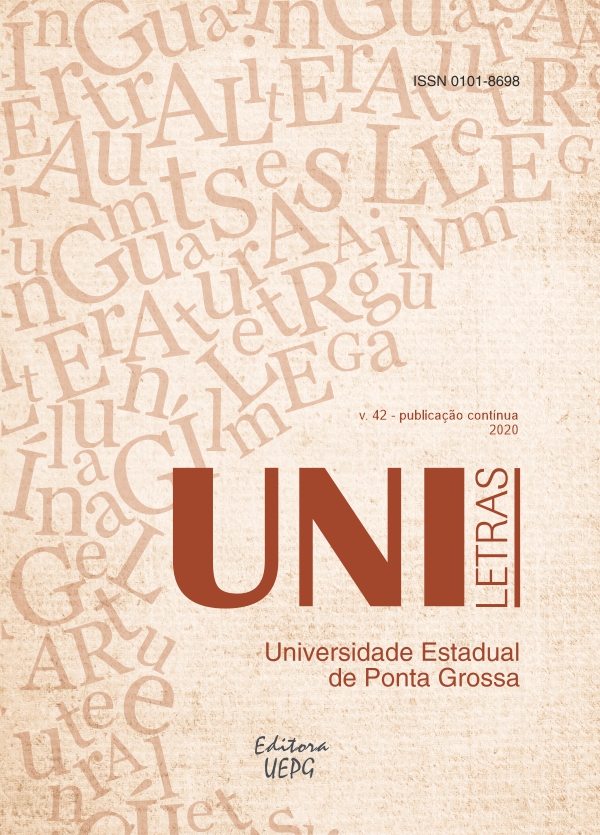THE CRUEL WOMAN CROSSES TIME: MEDEA, THE TRAGIC PHENOMENON AND THE CINEMA
Abstract
This article aims to investigate the resonance of the Medea myth, based on the version created by Euripides (from Ancient Greek: Εὐριπίδης), in 431 BC, in the 20th century cinema, which questions this female figure as a paradigm of passionate and cruel woman. In this sense, we elaborated a study of the cinematographic production Medea (1969), made by the Italian director Pier Paolo Pasolini, which proposes a rereading of the character, who, in the feature film, is played by the lyric singer Maria Callas. Thus, we examine how the tragic phenomenon occurs in the composition of the main character and in the development of the plot. As methodology, we conducted a comparative analysis of the Euripidian Medea and the homonymous character of Pasolini, based on a theoretical foundation composed by Aristotle (2002), Junito de Souza Brandão (1984), Massimo Fusillo (1996), Albin Lesky (1990), Ulysses Maciel (2011) and Ryan-Scheutz (2007).
Downloads
Downloads
Published
Issue
Section
License
Authors that publish in the journal agree with the following terms:
a) The authors keep the copyright and grant to the journal the rights of the first publication, with the work simultaneously being licensed under the Creative Commons Attribution License that allows the sharing of the work with the recognition both of the authorship and the initial publication in this journal.
b) This journal provides immediate public access to all of its content, following the principle that making scientific knowledge freely available to the public provides greater worldwide democratization of knowledge. For more information about this approach, visit Public Knowledge Project, a Project that developed this system to improve the academic and public quality of research, distributing OJS as well as other softwares to support the publication system to public/open access to academic sources. Names and e-mail addresses in this website will be used exclusively for this journal purposes, not being available for other ends.

This work is licensed under a Creative Commons Attribution 4.0 International License.





